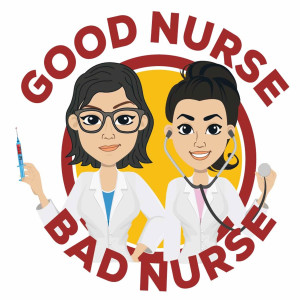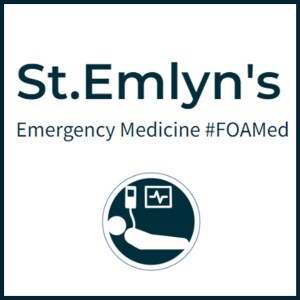The latest CAN is one of our brand-new 'revision editions' -- brief podcasts aimed at covering the essentials of critical appraisal for medical students and junior doctors preparing for exams.
With the help of Gregory Yates, an academic doctor based in Manchester, this episode introduces two core concepts: sensitivity and specificity. These are two ways of thinking about the accuracy of a diagnostic test. Knowing the sensitivity and specificity of an investigation will give you a decent idea of how it should be used in the emergency department.
Sensitivity (Sn) describes the chance that a test will be positive if your patient has the condition you're testing for. Some people call it the 'true positive rate' or alternatively the positivity in disease (PID) rate. If you need a hand remembering it, you can always remember that PID is a sensitive issue.
Meanwhile, specificity (Sp) considers the chance of a test being negative if the patient doesn't have the condition you're testing for. It's the 'true negative rate' or alternatively the negativity in health (NIH) rate. There are times when we particularly need a test to have a high sensitivity. This is generally when we want to be particularly confident that a test accurately identifies everyone with the relevant condition because we really don't want to miss it. We need a high sensitivity to rule out disease. (Sn-uff it out). At other times, we need to be confident that a patient with a positive test actually has the disease - for example, if the treatment is unpleasant or involves exposing patients to risk. In that case, we want a high specificity to rule in disease. (Sp-in it in).
In this CAN, we use D-Dimer as an example of a very sensitive investigation: it’s positive in nearly 100% of cases of venous thromboembolism. Specificity describes the likelihood that the test will be negative if your patient does not have the disease. We use HbA1c as an example of a highly specific investigation: it’s rarely used in the emergency department, but if it’s elevated, we can be almost certain that the patient is diabetic. HbA1c is almost never (
More Episodes
Ep 89 - March 2017 Round Up
 2017-03-05
2017-03-05
 3.7k
3.7k
Ep 88 - ED transfers. Patient, Preparation and People.
 2017-02-14
2017-02-14
 4.9k
4.9k
Ep 87 - Critical Appraisal Nugget 6: Retrospective and Prospective studies
 2017-01-14
2017-01-14
 4.0k
4.0k
Ep 86 - Critical Appraisal Nugget 5: Journal Clubs
 2017-01-06
2017-01-06
 4.0k
4.0k
Ep 85 - Top tips for chest drains.
 2016-12-13
2016-12-13
 5.4k
5.4k
Ep 84 - Critical Appraisal Nugget 4: Intention to Treat
 2016-12-09
2016-12-09
 4.2k
4.2k
Ep 83 - The Teaching Course in NYC Round Up
 2016-11-17
2016-11-17
 3.4k
3.4k
Ep 82 - Apparent Life Threatening Events in Babies
 2016-10-29
2016-10-29
 11.3k
11.3k
Ep 81 - Difficult Conversations with Children in Critical Care with Liz Crowe
 2016-10-12
2016-10-12
 5.6k
5.6k
Ep 80 - EuSEM Half Time Talk
 2016-10-03
2016-10-03
 3.3k
3.3k
Ep 79 - Critical Appraisal Nugget: Selection Bias
 2016-09-15
2016-09-15
 4.1k
4.1k
Ep 78 - Intro to EM: Upper GI bleeding
 2016-09-09
2016-09-09
 6.5k
6.5k
Ep 77 - Critical Appraisal Nugget 2: Blinding and Masking in clinical trials
 2016-08-24
2016-08-24
 4.7k
4.7k
Ep 76 - Communication workshop with Liz Crowe (SMACC DUB)
 2016-08-17
2016-08-17
 4.3k
4.3k
Ep 75 - Critical Appraisal Nugget 1: Randomisation
 2016-08-10
2016-08-10
 4.8k
4.8k
Ep 74 - ED Handover in the resus room: A panel discussion at SMACC DUB. (Part 2)
 2016-07-31
2016-07-31
 3.8k
3.8k
Ep 73 - ED Handover in the resus room: A panel discussion at SMACC DUB. (Part 1)
 2016-07-08
2016-07-08
 2.9k
2.9k
Ep 72 - Wellbeing with Liz Crowe
 2016-06-26
2016-06-26
 4.3k
4.3k
Ep - 71 SMACC Dublin Day 3 Round Up
 2016-06-22
2016-06-22
 3.1k
3.1k
Ep - 70 SMACC Dublin Day 2 Round Up.
 2016-06-16
2016-06-16
 3.9k
3.9k
Create your
podcast in
minutes
- Full-featured podcast site
- Unlimited storage and bandwidth
- Comprehensive podcast stats
- Distribute to Apple Podcasts, Spotify, and more
- Make money with your podcast
It is Free
You may also like

Good Nurse Bad Nurse


The Relaxback UK Show


On Call With Dr. Anselm Anyoha


The Peter Attia Drive


The Doctor’s Farmacy with Mark Hyman, M.D.

- Privacy Policy
- Cookie Policy
- Terms of Use
- Consent Preferences
- Copyright © 2015-2024 Podbean.com



 iOS
iOS Android
Android